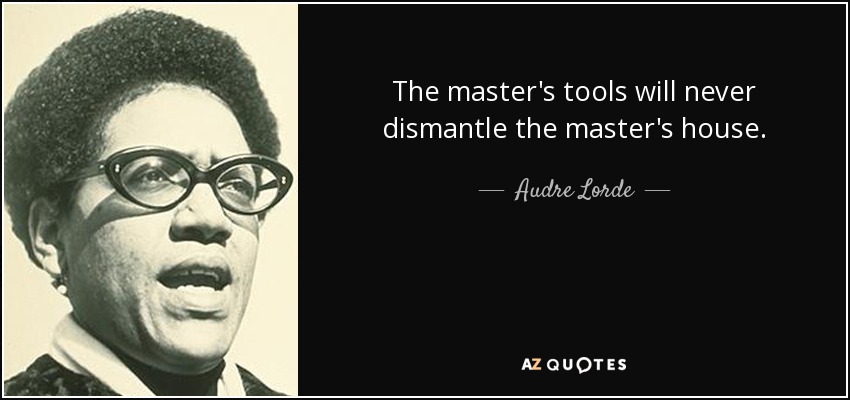
Simone Veil, Speech for Legalization Abortion, French National Assembly, 1974
I first wish to share my conviction of woman - and I apologize to do so in front of this Assembly, almost exclusively made of men: no woman resorts happily to abortion. One just has to listen to women. It is always a tragedy and will always remain a tragedy.
Chimamanda Ngozi Adichie, We Should All Be Feminists, 2014
We teach girls to shrink themselves, to make themselves smaller. We say to girls, you can have ambition, but not too much. You should aim to be successful, but not too successful. Otherwise, you would threaten the man. Because I am female, I am expected to aspire to marriage. I am expected to make my life choices always keeping in mind that marriage is the most important. Now marriage can be a source of joy and love and mutual support but why do we teach girls to aspire to marriage and we don’t teach boys the same? We raise girls to see each other as competitors not for jobs or accomplishments, which I think can be a good thing, but for the attention of men. We teach girls that they cannot be sexual beings in the way that boys are.
Esther
Read: Esther 2:5-17 / Esther 4:11-14 / Esther 7 What is your image of Esther? In the text, what kind of power does Esther have? Which verbs does the text use? Do you notice a change between the different excerpts?Vashti

Women reading Megillah
ת"ר הכל עולין למנין שבעה ואפילו קטן ואפילו אשה אבל אמרו חכמים אשה לא תקרא בתורה מפני כבוד צבור
§ The Sages taught in a Tosefta (Megilla 3:11): All people count toward the quorum of seven readers, even a minor and even a woman. However, the Sages said that a woman should not read the Torah, out of respect for the congregation.
ואריב"ל נשים חייבות במקרא מגילה שאף הן היו באותו הנס
And Rabbi Yehoshua ben Levi also said: Women are obligated in the reading of the Megilla, as they too were in that miracle.
שאף הן היו באותו הנס - שאף על הנשים גזר המן להשמיד להרוג ולאבד מנער ועד זקן טף ונשים וגו':
"As they too were in that miracle": because Haman decreed also to exterminate, kill and decimate women, together with youngsters, elders and children
שאף הן היו באותו הנס. פירש רשב"ם שעיקר הנס היה על ידן בפורים על ידי אסתר
Since they were also part of the same miracle. Rashbam explained, that the primary part of the miracle was done by them; Purim - by Esther
The Reading of the Megilla on Purim Night, by Rabbi Daniel Landes on February 1, 1997
Women, as facilitators of God’s miracle, have a paradigmatic role in Persumei Nisa. Esther, who was stirred into areivut, responsiblity, for her people, is described in the Megillah as “donning kingly [attire]” to meet Ahashveros on Israel’s behalf. The Midrash Rabbah explains that these were the robes of her kingly ancestors. Thus Esther dons not the robes of her surrounding society, of Persian nobility, but rather comes clothed in the royal garments of the house of Saul, who had neglected to completely defeat Amalek. Now it is her turn to complete the task. The women and men who will read the Megillah at Machon Pardes also come clothed for the reading not in the mores of the surrounding society, but from the deepest sources of our tradition.
Vashti and Esther: A Feminist Perspective, myJewishLearning.org, Rabba Wendy Amsallem
Although Vashti and Esther never meet, the relationship between them is integral to understanding the events of the Book of Esther. Vashti disappears by the end of the first chapter, but she casts a long shadow over the rest of the book.(...) By contrast, Esther is presented at first as the perfect foil to Vashti. Whereas Vashti was willful and independent, Esther is passive and submissive. The reflexive use of the Hebrew word “LaKaKH” is constantly applied to her. She is “taken” in by Mordechai as a foster daughter, “taken” to the king’s harem, and “taken” before the king. She does not reveal her identity at the palace, “for Mordechai had commanded her not to tell.” (...)
Of course, we do not actually know why Vashti refused to appear before the King.(...) As Esther marshals her strength to save her nation, she must revisit the experiences of her shunned predecessor and learn from them. Esther is more calculated, more subtle, (more divinely inspired) and ultimately far more successful than Vashti. Yet, in order to triumph, Esther must confront the image of Vashti and incorporate (or perhaps discover) the attributes of Vashti in herself.
As Orthodox feminists, we are constantly confronted with taboo images of dangerous women from whom we are told to distance ourselves. A is too radical, B has gone too far, C has made too many enemies. We struggle to draw our borders, to be open and yet traditional, free and yet constrained within halacha. Purim is a holiday in which we explore and challenge our boundaries. We dress up as other people. Some of us drink to the point where differences become blurred. In the spirit of this holiday and following the legacy of our ancestor Esther, I encourage us to reexamine whom we emulate and from whom we shy away. We may discover as Esther did that we are not so different from those whom we fear and that the most important lessons can be learned from the unlikeliest of teachers.
The Book of Esther By Stacey Zisook Robinson
That blush on my cheek? It's paint. And I have glittered my eyes and robed myself in the finery of silk and gossamer, lapis and gold—and whored myself for your salvation.
You asked for no thoughts. You merely offered my body to the king — my life forfeit if my beauty failed.
You asked for no ideas and I gave you none, though I had a thousand, and ten thousand more. Diplomacy was played on the field of my body, the battle won in the curve of my hipand the satin of my skin, fevered dreams of lustand redemption.
That blush on my cheeks? It is the stain of my victory and my shame.




